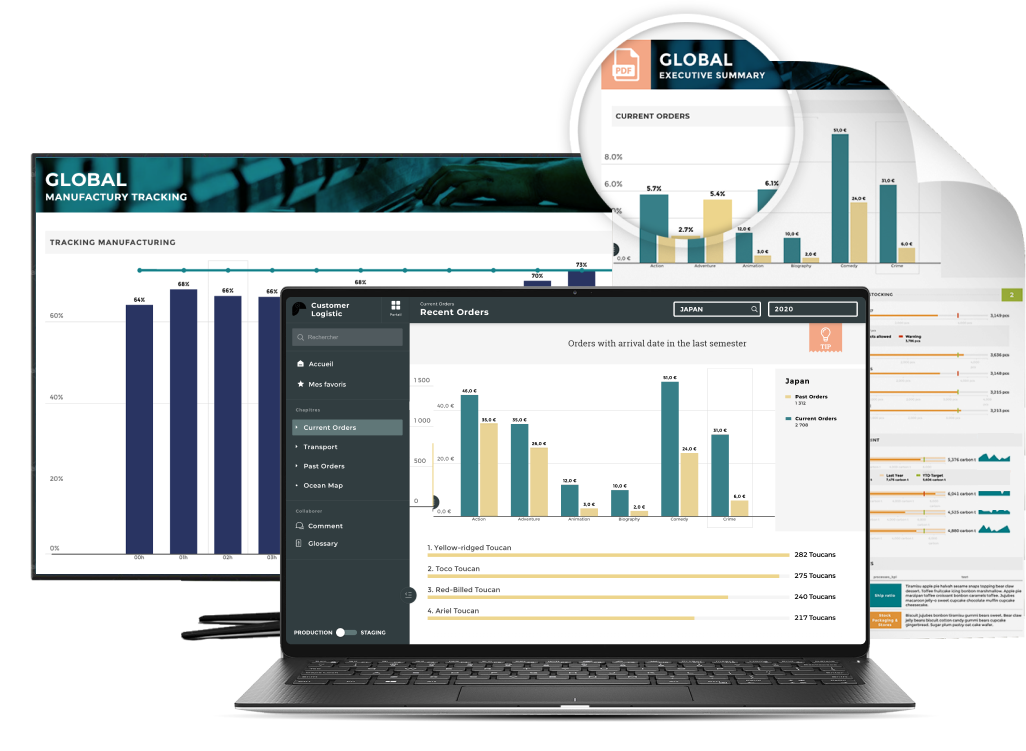An annual marketing report takes data from your marketing channels in real-time, visualizes it, and lets you create a custom report that you can send to your marketing team, your clients, or your managers.
The most important advantage is that it allows you to track your marketing performance and KPIs across all your marketing channels and determine where your digital marketing efforts have been successful and where they need to be improved.
Your annual marketing report should include data and performance insights from all the marketing channels you use to promote your brand, products, and services. Assessing whether you're on the right track or if improvements need to be made. This will prove that you're making progress toward your goals. Reporting on your marketing budget will help prove whether you need more in the new year, by showing where your funds are being spent.
Your annual marketing report should include:
- Your marketing strategy - goals and projected outcomes
- Audience and market research
- Promotions and events
- Paid social media advertising
- Email campaigns
- Goals
- Expected outcomes
The Purpose of an Annual Marketing Report
- Defining success. By defining your desired outcomes clearly, you help define the parameters for success and make it more likely that you will achieve them. "Goal-setting marketers are 376% more likely to report success”, according to a recent report.
- Evaluation. The success of your team is measured based on how you define success. Have you met your marketing goals this year? It is impossible to measure that unless you first set the parameters.
- Communication. Communication is at the heart of the annual marketing report. As a marketing leader, you use it to communicate what your marketing team has accomplished, what it is looking to accomplish, and what value your marketing team provides for your organization.
How to present your marketing data
Everyone must have access to a clear and concise marketing dashboard: it keeps them informed about the marketing efforts being undertaken and, more importantly, informs them whether they are receiving a good return on investment.
The following tips will assist you in creating an effective annual marketing report:
- Use visualizations - Graphs and charts provide better information than written paragraphs.
- Have results upfront - Ultimately, this is what everyone is interested in, so this should be the first page of your report. To gain a full understanding of the marketing campaigns' performance, include notes and explanations of why things happened as they did.
- Show bad results - Let them know what happened upfront, and tell them what you're going to do. Honesty will be appreciated by your company.
- Keep it concise - If you want to cover a lot of material, go for it, but keep it brief and snappy
- Section the report - Using section headings to make your report easier to follow is an excellent way to make it clear and concise
What annual marketing report should you use?
Here are 6 of our most popular marketing report templates:
1. General annual marketing report
You can use this report to keep track of all your marketing activities. You'll have access to everything your marketing or sales team needs, from content marketing to e-commerce analytics to search engine optimization and more.
Please keep in mind that this report is an overview, if you would like to dig deeper into the statistics, check out the other detailed reports listed below.
Some KPIs we recommend including are:
- Bounce rate
- Campaign performance
- Channel performance by traffic source
- Conversion rate
- Goal completions
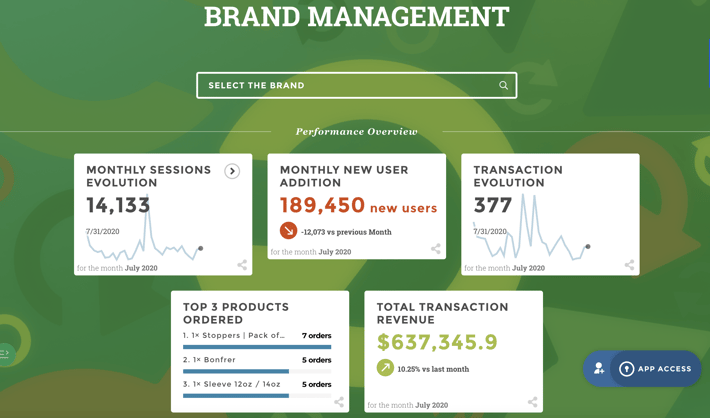
2. SEO marketing report example
In order to achieve long-term success in digital marketing, search engine optimization is essential. It is likely that you already utilize Google Analytics dashboards, but this report will allow you to keep your whole company informed about how your SEO efforts are progressing.
Key KPIs you should think about including in your SEO report include:
- Organic sessions
- Organic conversions
- Organic landing pages
- Keyword rankings
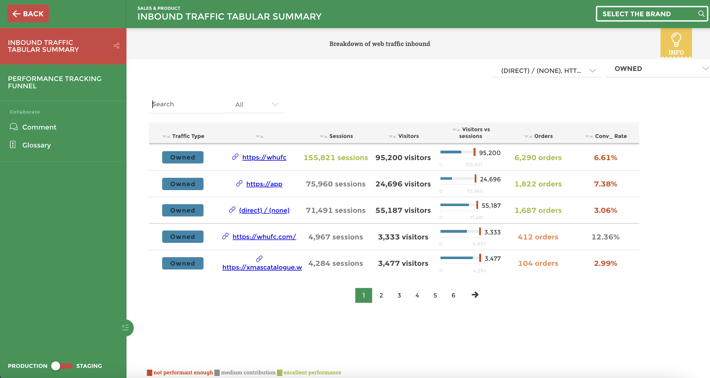
3. Social media marketing report example
Marketing through social media can be classified into two categories: paid and organic. You should include all the social media networks you are currently using in your reports, such as Facebook, Twitter, Instagram, Youtube, and LinkedIn.
Key KPIs that should be in your report are:
- Demographics of the target audience
- Likes and followers
- Conversions
- Ad performance
- Impressions and reach
- Engagement
- Top performing posts
It is recommended to organize the data in the report by channel, just as it is for PPC marketing.
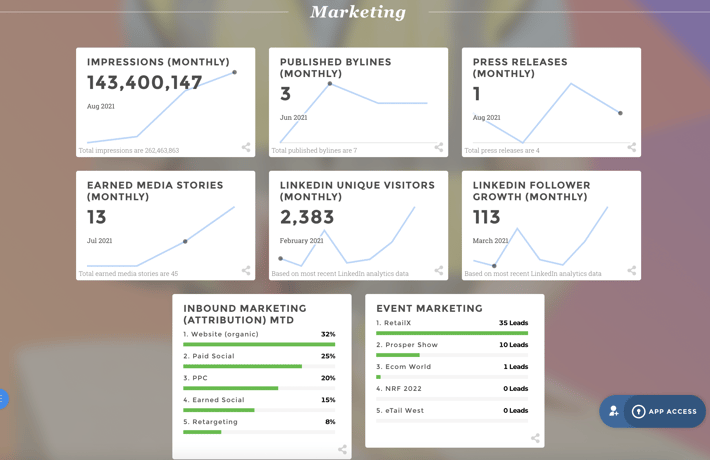
4. Display advertising campaign marketing report example
Use our display advertising campaign marketing report to view the performance of all your advertising campaigns in one place.
You should have a report that includes all of your display ad channels, whether they are via Facebook Ads or Google AdWords.
You should organize your data by campaign and track the following key performance indicators:
- Clicks
- Cost
- Click-through rate (CTR)
- Impressions
- Conversions
- Number of leads
- Revenues
- Clicks and costs
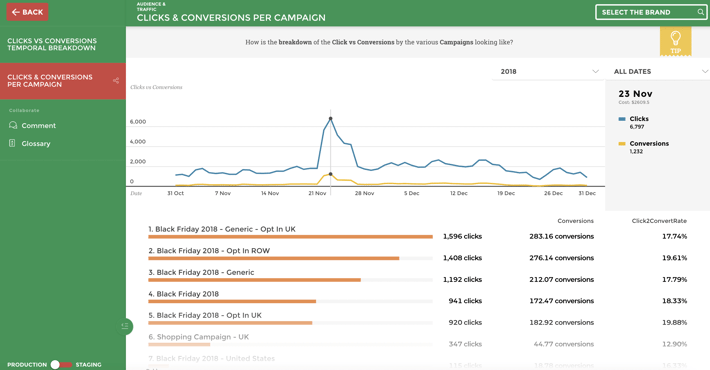
5. E-commerce marketing report example
Marketing strategies for e-commerce should evolve with your products and services. You'll want to track all the main KPIs in your e-commerce marketing report to ensure your e-commerce marketing efforts are delivering the best results.
There is no shortage of important metrics to track when it comes to e-commerce marketing, from Google Analytics to social media. The following are some key ones you should include in your report:
- Revenue
- Conversion rate
- Transactions
- Bounce rate
- Pages per session
- Average order value
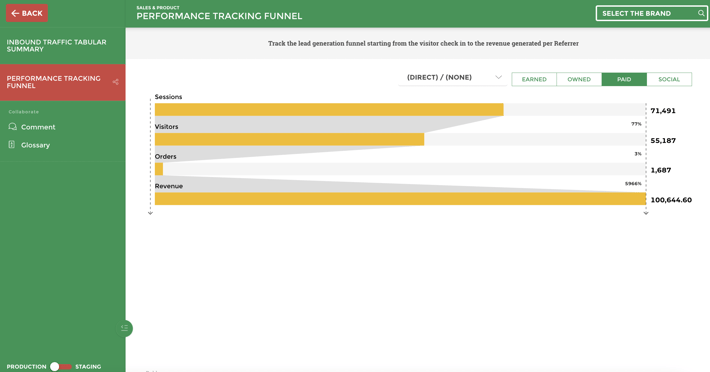
6. Email marketing report example
You can reach people directly through email marketing since it goes straight to their inboxes. However, you cannot simply send out emails and hope for the best. Your bottom line will be affected by how your campaigns perform and how changes in your content are implemented. Herein lies the value of your email marketing report.
KPIs your report should include are:
- Number of emails sent
- Unique open rate
- Click rate
- Overall campaign performance
In essence, you want to determine the number of people who opened your email and converted as a result.
Tips for Creating the Best Annual Marketing Report
By using these reports and your data, you will be able to build a quick breakdown of your marketing efforts for the past year, how they compare to your previous efforts, and what goals to set for the upcoming year.
Providing clear direction and communicating what is happening to your marketing team is all that is required. Let the numbers speak for themselves.
As a final note, here are some quick tips on how to prepare a comprehensive marketing performance report:
- Avoid vanity metrics - The purpose of this report is to provide a comprehensive evaluation of your overall performance. This report should also include recommendations for how you can improve next year. The more vanity metrics you include, the less honest you will be about your current achievements. As a result, your recommendations will be less accurate.
- Turn data into insights - Avoid looking at the numbers in a dry, stale manner. You can do that by turning these numbers into insights. Consider other variables when evaluating success and ask yourself “what are we doing well? ” or “what can we do better?” The annual marketing report is meant to not only provide data but context.
- Make it visual - To illustrate your data, you should include as many visual elements as possible. With this approach, you will be able to bring your insights to life and make it much easier for you to identify the more pressing issues.
- Don’t be afraid to use tools - A number of automated marketing report tools, like Toucan, can simplify the process of data collection so you can focus on drawing insights and making your report visually appealing.





